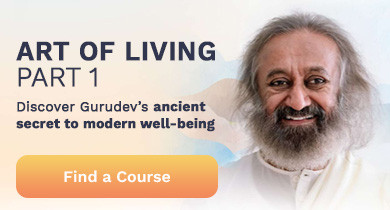By Krystal Childrey | Posted : September 17, 2020
If you had to sum up the practice of yoga in just a few words, what words would you choose? If you decided on terms like physical exercise, flexibility, or yoga poses, you wouldn't be alone.
After visiting a few yoga studios in the West, it doesn't take long to realize that most studios center their classes around a series of yoga poses, also known as asanas in Sanskrit. And it makes sense since most people sign up for a yoga class to improve their physical fitness. But the truth is, yoga was never designed to be a purely physical practice.
A true yogi understands that yoga is a holistic practice–a way of bringing the mind, body, and spirit all into alignment. And in addition to practicing yoga postures, breath control or pranayama is an integral part of the practice. The practice of pranayama has many benefits that affect our physical, mental, emotional, and spiritual health.
The importance of pranayama in yoga
The ancient practice of yoga originated in India as a way of life, and 196 yoga sutras outline the practice, acting as guidelines for living a meaningful life. The sutras reveal an eight limb path, highlighting yoga's primary goal–to reach a state of pure bliss and inner peace known as samadhi.
Pranayama is the fourth limb in the eight limb path, and regulating the breath is the precursor to turning our attention inward and experiencing deep meditation. A proper pranayama practice includes a combination of inhalation, exhalation, and breath retention, and each breathing technique will vary based on:
The length of the inhales, exhales, and breath holds
Where the breath retention occurs (e.g., after the inhale, exhale, or both)
Where we focus our attention as we breathe
The number of repetitions
Yogis believe that our breath pattern has a direct impact on the flow of prana–or the vital life energy that runs through our bodies. When we control the breath, we can regulate the flow of energy and strengthen our mind-body connection.
3 reasons to practice pranayama techniques
Scientific evidence is now backing up what yogis have known for centuries. It's now more apparent than ever that breathing exercises can positively impact our overall health and well-being. There are countless benefits the breath can provide, but let's look at a few of the top reasons to begin a pranayama practice today.
1. Gain control over your mind
Do you ever feel like your brain is running in constant overdrive? Our thoughts often spiral out of control due to our busy lifestyles, resulting in stress and anxiety. Pranayama exercises create space, giving our minds a break from racing thoughts. Being consistent with the practice also results in increased mindfulness.
Mindfulness connects us to the present moment and gives us the ability to control our thinking and behavior. Clinical studies have shown that higher levels of mindfulness also results in lower levels of stress and anxiety.
An effective pranayama used to calm the mind is ujjayi breath. It involves slightly constricting the throat while slowly inhaling and exhaling through the nostrils. This breathing technique creates a soft sound resembling ocean waves, which sends signals to the brain to relax.
Another unique yogic breathing practice, known as SKY Breath Meditation, was recently studied to determine if the technique could reduce stress and anxiety among college students at Yale University. Not only did SKY reduce stress and increase mindfulness, but it showed improvements in depression, positive affect, and social connectedness.
2. Regulate your emotions
Take a moment to think about how your natural breath pattern changes as you experience positive versus negative emotions. Negative emotions, such as anger, fear, or anxiety, produce uneven, shallow, and rapid breathing. But positive emotions, such as happiness and joy, correspond with consistent, slow, and deep breathing. Although we often aren't aware of it, our natural breathing pattern varies with our emotional states.
Practicing pranayama brings more awareness to the present moment, keeping us in tune with our emotions. As soon as you notice a negative emotion rising to the surface, you can use breath control to regulate your mood. A recent study showed that slow breathing techniques activated parts of the central nervous system related to emotional control. So next time you're feeling angry or stressed, try a slow breathing technique to bring your emotions back into balance.
Diaphragmatic breathing, also known as belly breathing or abdominal breathing, is a great breathing exercise to slow down the breath and trigger a state of relaxation. On each inhale, breathe slowly and deeply into the belly, filling it up like a balloon. On the exhale, slowly release the air from the abdomen.
3. Connect to your inner guidance
Remember when you were a small child with big dreams about who you'd grow up to be? As we get older, we begin to compare ourselves to others, doubt our potential, and question our decisions. In the process, we grow farther away from our true selves and lose sight of our purpose in life.
Pranayama techniques allow us to focus inward, removing distractions from the outside world. We're able to connect to our intuition, aligning our decisions with our purpose in life. When we understand our purpose, this brings about more balance in our lives and increases feelings of self-worth, self-esteem, and confidence.
Nadi shodhana, or alternate nostril breathing, is a calming pranayama known for providing mental clarity and balancing the brain's right and left hemispheres. The technique requires breathing through only one nostril at a time, alternating nostrils between the inhales and exhales.
Start your pranayama practice today
Are you ready to learn some powerful breathing techniques to help you get started on your journey? Sign up for Beyond Breath, our free introductory breath and meditation session complete with a live instructor. Experience the difference the breath makes in your overall energy levels and state of mind. You'll also learn more about SKY Breath Meditation, which has helped millions of people gain a sense of calm and clarity in their daily lives.
Krystal Childrey is a health and wellness copywriter located in Seattle, WA. She is a registered yoga teacher, mental health advocate, and member of the National Alliance on Mental Illness (NAMI). When she’s not writing or practicing yoga, she enjoys day hiking across the Pacific Northwest. You can find her on LinkedIn.



























